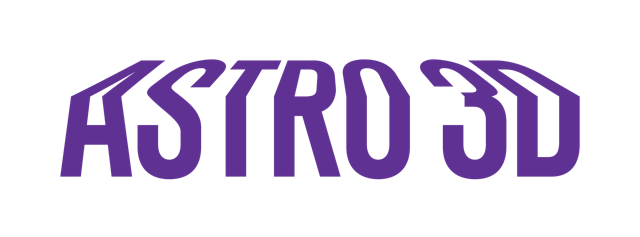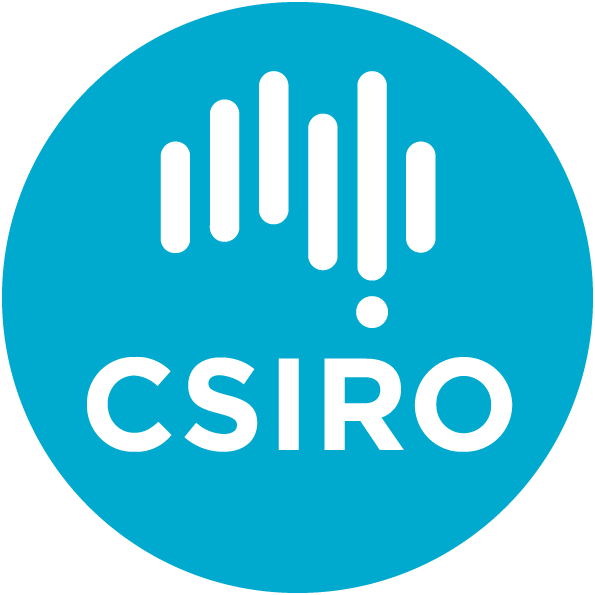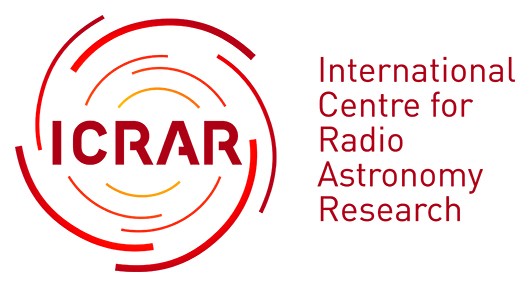WALLABY proposal
The original WALLABY proposal was submitted on 15 June 2009 and accepted as one of two top-ranked ASKAP proposals on 4 September 2009. The final WALLABY proposal (de-scoped in sky coverage for reasons of lower-than-expected ASKAP sensitivity) was submitted for the Review of ASKAP Science Survey Projects (RASSP) on 11 November 2021, and was again top-ranked (grade A) and allocated 8832 hrs for a 5-year program starting in late-2022.
If you are keen to join the team and have something to contribute, please let us know.
WALLABY: Widefield ASKAP L-band Legacy All-sky Blind surveYOriginal Principal Investigators: Bärbel S. Koribalski (ATNF) and Lister Staveley-Smith (UWA) Current Principal Investigators: Barbara Catinella (ICRAR/UWA) and Lister Staveley-Smith (ICRAR/UWA) Original Co-Investigators: Alexandra Abate (LAL), David Barnes (Swinburne), Carlton Baugh (Durham), Kenji Bekki (UNSW), Nadya Ben Bekhti (AIfA), Chris Blake (Swinburne), Sarah Blyth (UCT), Antoine Bouchard (UCT), Robert Braun (ATNF), Michael Brown (Monash), Pieter Buyle (Ghent), Matthew Colless (AAO), Erwin de Blok (UCT), John Dickey (Tasmania), Simon Driver (St. Andrews), Alan Duffy (UWA), Loretta Dunne (Nottingham), Steve Eales (Cardiff), Alastair Edge (Durham), Bjorn Emonts (ATNF), Jayanne English (Manitoba), Bryan Gaensler (USyd), Karl Glazebrook (Swinburne), Neeraj Gupta (ATNF), Chris Harris (UWA), Martin Hendry (Glasgow), Trish Henning (UNM), Benne Holwerda (UCT), Andrew Hopkins (AAO), Tom Jarrett (IPAC), Matt Jarvis (Hertfordshire), Helmut Jerjen (ANU), Heath Jones (AAO), Gyula Józsa (ASTRON), Eva Juette (Bochum), Peter Kalberla (AIfA), Jürgen Kerp (AIfA), Virginia Kilborn (Swinburne), Sungeun Kim (Sejong), Renee Kraan-Korteweg (UCT), Henry Lee (Gemini), Lerothodi Leeuw (NASA Ames Research Center; SKA South Africa), Ángel López-Sánchez (ATNF), Gerhardt Meurer (Johns Hopkins), Martin Meyer (UWA), Raffaella Morganti (ASTRON), Jeremy Mould (Melbourne), Erik Muller (Nagoya), Tara Murphy (USyd), Hiroyuki Nakanishi (Kagoshima), Ray Norris (ATNF), Seheon Oh (ANU), Tom Oosterloo (ASTRON), Attila Popping (Groningen), Chris Power (Leicester), Peter Quinn (UWA), Somak Raychaudhury (B-ham), Steve Rawlings (Oxford), George Rhee (Nevada), Emma Ryan-Weber (Cambridge), Stuart Ryder (AAO), Elaine Sadler (USyd), D.J. Saikia (NCRA), Paolo Serra (ASTRON), Kristina Spekkens (RMC), Anja Schroeder (KAT Office), Christian Struve (ASTRON), Mark Thompson (Hertfordshire), van der Hulst (Kapteyn), Wim van Driel (Paris), Marc Verheijen (Kapteyn), Bart Wakker (Wisconsin), Brad Warren (UWA), Rachel Webster (Melbourne), Tobias Westmeier (ATNF), Matthew Whiting (ATNF), Eric Wilcots (Wisconsin), Richard Wilman (Melbourne), Benjamin Winkel (AIfA), Ivy Wong (Yale), Min Yun (UMass), Daniel Zucker (AAO/Macquarie), and Martin Zwaan (ESO). Current team: see team page. Original 2009 abstractWe propose an extragalactic neutral hydrogen (HI) survey which will cover 75% of the sky (-90o degr < DEC < +30o), producing the largest sample of galaxies that is possible to observe in a given observing time with ASKAP. The fundamental aims of this proposal are to examine the HI properties and large-scale distribution of ~500,000 galaxies out to a redshift of 0.26 (equivalent to a look-back time of ~3 Gyr) in order to study: (1) galaxy formation and the missing satellite problem in the Local Group, (2) evolution and star-formation in galaxies, (3) mergers and interactions in galaxies, (3) the HI mass function and its variation with galaxy density, (4) physical processes governing the distribution and evolution of cool gas at low redshift, (5) cosmological parameters relating to gas-rich galaxies, and (6) the nature of the cosmic web. WALLABY will provide the largest, most homogeneous HI sample of galaxies, complemented by similarly uniform multi-wavelength data, and will be an important pathfinder for key SKA HI science projects. To achieve the above, we propose to observe each 30 deg2 ASKAP field for a single period of 8 hours in the frequency range 1.13 to 1.43 GHz (corresponding to -2000 < cz < 77,000 km s-1) and divided into 16,384 spectral channels (ie. 4 km s-1 rest-frame velocity resolution). The total integration time, slightly dependent on tiling algorithm, will be around 13 months. The WALLABY survey parameters are well-aligned with the other all-sky survey SSPs, e.g. EMU (radio continuum), POSSUM (polarization), FLASH (absorption), and will facilitate other science such as fast and slow transient detection. An important part of the WALLABY science includes continuum emission from gas-rich galaxies (providing a measure of their star-formation rate), Damped Lyman alpha absorption analogs (a measure of disk cross-section and gas temperature), and the use of gas dynamics to assist in the interpretation of the magnetic field properties of the nearby extended galaxy population. Discussions with other SSP proposers and pipeline developers are under way. WALLABY will have a flux sensitivity some 20 times better than the HI Parkes All-Sky Survey (HIPASS), at a velocity resolution some 4 times better, and will detect 20 times more galaxies than the ongoing Arecibo ALFALFA survey with six times better spatial resolution. WALLABY will detect dwarf galaxies (MHI = 108 M*) out to a distance of ~60 Mpc, massive galaxies (M*HI = 6 x 109 M*) to ~500 Mpc, and super-massive galaxies like Malin 1 (MHI = 5 x 1010 M*) to the survey ‘edge’ of 1 Gpc. The mean sample redshift is expected to be z = 0.05 (200 Mpc). While the majority of the detected HI galaxies will be spatially unresolved with the ASKAP 2-km configuration, we expect all to be spectrally resolved. For the ~1000 galaxies which will be spatially well-resolved (>5′ or >10 beams across), we will obtain data similar in quality, sensitivity and resolution to the ~300 nearby galaxies recently imaged in major interferometer studies, including the `Local Volume HI Survey’ (LVHIS) at the AT Compact Array, THINGS, Little THINGS and ANGST at the VLA, FIGGS at the GMRT, and WHISP at the WSRT (see summaries in Koribalski & Jerjen 2008). For the ~3 × 104 galaxies expected to be larger than 1.5′, we will be able to measure simple structural, mass and angular momentum parameters. For this purpose, we plan an automated parametrization pipeline. For each detected galaxy WALLABY will deliver the following data products: (1) a 3D data cubelet, (2) an integrated HI spectrum, (3) an HI column density image, (4) a radio continuum image, and (5) a full parametrization of galaxy properties, as well as – for extended sources – (6) a velocity field, and (7) a dispersion field. In addition, we plan to search for faint HI emission in well-selected optical/IR galaxy samples by co-adding (`stacking’) the HI data at the position and redshift of the optical/IR galaxy. These extra redshifts will come from recent 2MASS-selected galaxy surveys such as 6dFGS and from possible spectroscopic extensions based on deeper optical/IR samples. WALLABY will deliver data suitable for a range of studies, from High-Velocity Clouds (HVCs) at the edge of our Galaxy, to new Local Group galaxies, from a census of galaxies in the Local Volume, out to distant clusters and super-clusters. The volume covered (0.4 Gpc3 for M*HI galaxies) is large enough for the measurement of cosmological parameters without substantial cosmic variance. We expect to be able to accurately measure the density-dependence of the HI mass function, the clustering and bias parameter for gas-rich galaxies and the local flow field. Further, we expect a possible detection of baryonic acoustic oscillations at the lowest redshift. Independently of forthcoming optical surveys, WALLABY could reduce the errors on the dark energy parameter w and the Hubble Constant h by up to a factor of two when compared with PLANCK-only data. But more importantly (given the rapid progress of dark energy surveys currently underway), WALLABY will serve as an accurate zero-redshift anchor for later SKA HI surveys of the distant Universe and will inform SKA HI survey designers of parameters which are presently poorly known. As with HIPASS, WALLABY is also expected to detect a large number of interacting gas-rich galaxies missing in optical surveys of the Local Universe and, through comparison with new generations of optical (SkyMapper, PanStarrs, VST, LSST), infrared (VISTA, WISE, Herschel) and millimetre/sub-millimetre (ALMA) observations, will deliver a new synoptic view of the Local Universe. Revised 2021 RASSP abstractThe Widefield ASKAP L-band Legacy All-sky Blind surveY (WALLABY) is a next-generation survey of neutral hydrogen (HI) in the Local Universe, which will produce the largest sample of galaxies that is possible to observe with ASKAP in a given observing time. With the high angular resolution of ASKAP, WALLABY will allow a detailed examination of the properties and distribution of a predicted 300,000 galaxies in the southern sky (at S/N > 5) over a volume of 0.15 Gpc3, larger than any other ongoing or proposed HI survey. The scientific goals of WALLABY include: (a) measurements of the velocity fields and rotation curves of galaxies to resolve the long-standing cusp-core tension in ΛCDM theory and to allow the baryonic/dark matter mass dissections of unprecedentedly large samples; (b) a study of the individual and statistical properties of galaxies in and around groups and clusters to better understand galaxy evolution, including the relative roles of tidal and hydrodynamic forces; (c) the most accurate measurement of the HI mass and velocity functions and their variation with environment (local density); (d) the refinement of cosmological parameters and tests of GR and ΛCDM using the spatial and redshift distribution of gas-rich galaxies; (e) a study of the dynamics of high-velocity clouds near the Milky Way and their role in tracing accretion and outflows; and (f) a census of gas-rich galaxies in the vicinity of the Local Group in order to quantify the role of the early ionization field on low-mass galaxy formation. WALLABY will have enormous legacy value alongside other southern surveys such as LSST and eROSITA. Its redshifts and peculiar velocities will permit vastly improved localisation for gravitational wave bursts, permitting host galaxy redshift and peculiar velocity determination, leading to more precise measurements of the Hubble constant. WALLABY will be a true survey pathfinder for the SKA, and will not be surpassed in the combination of breadth, depth, and resolution until the advent of the SKA Key Science Projects. Furthermore, WALLABY will identify interesting targets for deeper, higher-resolution SKA follow-up. WALLABY is completely commensal with respect to observing strategy with other band 2 (1.4 GHz) ASKAP observations, ultimately producing uniform all-sky spectral line and continuum maps with 50% better resolution than available in band 1. A joint agreement is in place with VAST, a cross-team membership arrangement is in place with GASKAP, a joint working group to identify and collaborate on crossover science with EMU has been formed, and POSSUM’s science would be greatly enhanced with the addition of band 2 observations due to increased λ2 coverage. Relative to the original proposal, the reduction in bandwidth of the ASKAP correlator and the increase in radio-frequency interference from Global Navigation Satellite Systems (GNSS) has meant that pilot WALLABY observations have been unable to access galaxies at redshifts z > 0.1 (the original limit was 0.26). However, as WALLABY is a shallow survey with a mean redshift of 0.04, this is not a problem for direct detections. Studies based on stacking will suffer more. But there are mitigating factors, namely: (a) with TAIPAN not proceeding, there is not a large number of optical redshift targets in this redshift range outside of the well-studied medium-deep and deep fields such as the GAMA regions; and (b) other ASKAP, FAST, and MeerKAT deep surveys are better placed to study galaxies and their evolution at redshifts z > 0.1–0.2. Important noteWALLABY was allocated 8,832 hours for a 5-year survey from 2023–2028. However, the RASSP request was for 12,480 hours, so WALLABY is likely to be able to cover only 14,000 deg2 during this time. |



